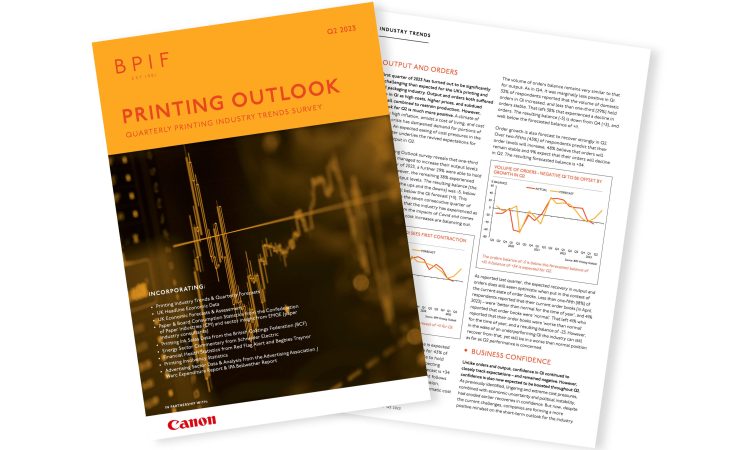A more challenging than expected first quarter of 2023 should be followed by a better experience in Q2 as cost pressures top out, according to the BPIF’s Printing Outlook survey.
While one third of printers increased output in the first quarter, and 29% held steady, this was offset by a contraction for the remaining 38%, leading to a net balance of -5, which was both below the Q4 2022 figure of +4 and considerably less than the forecast +11 from the previous quarter’s report. It also represents the first contraction in overall output for two years, after seven consecutive quarters of growth.
Stubbornly high inflation amidst a cost of living and cost of business crisis is seen as dampening demand for portions of the industry during the period. However, an expected easing of cost pressures in the current quarter has led to revived expectations for orders and output in Q2: output growth is forecast for 43% of respondents, with 48% expecting to hold steady, leaving only 9% expecting to see volumes fall.
Delving into business concerns, energy costs remain by far the biggest, selected by 68% of respondents, though this is down from from 75% in January and 83% in October 2022, suggesting that it it starting to ease off. The next most frequently cited was competitor pricing, particularly when perceived to be at less than cost, was chosen by 54%, with wage pressures being a concern for half.
BPIF chief executive Charles Jarrold commented, ‘Lingering and extreme cost pressures, combined with economic uncertainty and political instability, had eroded earlier recoveries in confidence. But now, despite the current challenges, companies are forming a more positive mindset on the short-term outlook for the industry.
‘Prospects for later in the year still depend upon the UK navigating a smooth path through a period of continued high energy costs, stubborn inflation and economic instability. Whilst there is no shortage of pressures for companies to deal with, inflation is still expected to fall sharply as we progress further through 2023, and energy costs are expected to settle further.’

